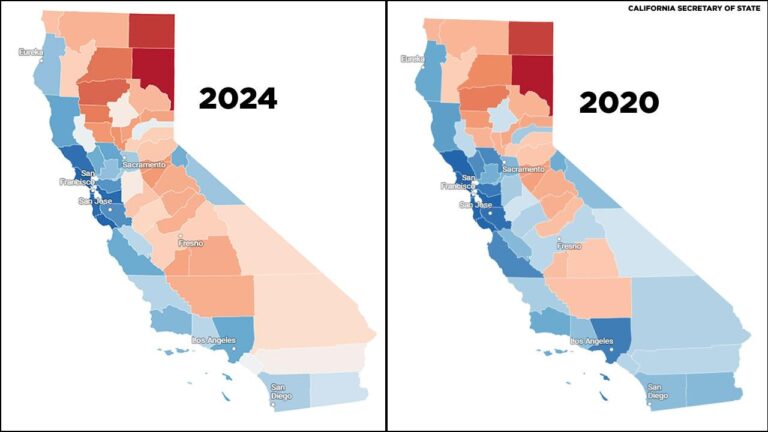Analyzing California’s Political Landscape: Insights from the 2020 Public Policy Institute Report
Understanding California’s Political Diversity and Regional Contrasts
California’s political environment is a mosaic shaped by its expansive geography and multifaceted population. Metropolitan coastal cities such as San Francisco, Los Angeles, and San Diego tend to support progressive agendas, influenced by their youthful populations, booming tech industries, and culturally diverse communities. In contrast, regions like the Central Valley and Inland Empire often adopt more conservative viewpoints, prioritizing issues like agricultural sustainability, water resource management, and economic growth. This stark regional contrast presents a significant challenge for legislators who must reconcile the differing needs of urban centers and rural areas when formulating statewide policies.
Key elements that highlight these regional political distinctions include:
- Economic Foundations: Innovation-driven urban economies advocate for forward-thinking regulations, whereas agricultural zones emphasize land rights and farming subsidies.
- Cultural Values: Progressive social policies dominate in cities, while traditional and conservative values are more prevalent inland.
- Population Concentration: High-density urban districts exert considerable electoral influence compared to the more sparsely inhabited rural counties.
| Region | Political Orientation | Primary Policy Priorities |
|---|---|---|
| Bay Area | Strongly Democratic | Climate action, technological innovation, affordable housing |
| Central Valley | Moderate to Conservative | Agricultural support, water resource allocation, immigration policy |
| Inland Empire | Conservative-leaning | Employment growth, public safety, infrastructure development |
| Southern California Coast | Democratic | Transportation systems, environmental safeguards, education reform |
Demographic Shifts and Their Influence on Voting Trends and Party Dynamics
The evolving demographic makeup of California has significantly transformed electoral behaviors and strengthened emerging political alliances. The expanding Latino and Asian American populations have increasingly aligned with the Democratic Party, motivated by concerns such as immigration reform, educational opportunities, and healthcare accessibility. Conversely, regions with a higher proportion of older white residents exhibit a more varied partisan alignment, often leaning Republican due to issues like taxation and law enforcement. These demographic changes have deepened the political polarization within the state, consolidating Democratic dominance in urban areas while bolstering Republican support in rural and select suburban locales.
Campaign strategists now heavily rely on demographic data to tailor their outreach efforts. Influential factors shaping voter preferences include:
- Age Groups: Younger voters tend to favor progressive platforms, influencing party strategies.
- Ethnic and Racial Diversity: Multicultural communities generally support inclusive and equity-focused policies.
- Migration Trends: New residents from other states introduce fresh political perspectives.
- Economic Status: Income disparities correlate with differing party loyalties.
| Demographic Segment | Political Affiliation | Core Issues |
|---|---|---|
| Latino Voters | Democratic | Immigration reform, education access, healthcare |
| Asian American Voters | Democratic | Economic advancement, social justice initiatives |
| Older White Voters | Mixed, tending Republican | Tax policy, public safety concerns |
| Younger Voters | Progressive Democrats | Climate change, social equity |
Major Policy Issues Influencing California’s Political Trajectory
California’s political future is shaped by a series of complex challenges requiring sophisticated policy solutions. Housing affordability remains a critical concern, affecting both urban and suburban populations and fueling widespread debate. The state’s diverse demographic composition intensifies discussions around immigration reform and social justice, underscoring the necessity for inclusive and equitable legislation. Additionally, climate change presents an urgent threat, with wildfire prevention and renewable energy development at the forefront of policy agendas.
Fiscal management is another pivotal issue, as California balances ambitious social programs with budgetary constraints. The ongoing dialogue reflects the tension between progressive goals and practical financial stewardship. The following table outlines key policy challenges and their political implications:
| Policy Challenge | Political Impact | Primary Stakeholders |
|---|---|---|
| Housing Affordability | Mobilizes urban voters, shifts suburban priorities | Renters, real estate developers, municipal governments |
| Immigration Reform | Shapes party platforms, energizes advocacy groups | Immigrant populations, civil rights organizations |
| Climate Change | Drives environmental legislation, impacts economic sectors | Environmental advocates, industry leaders, rural communities |
| Fiscal Policy | Influences budget debates, affects public service delivery | Taxpayers, public sector employees, policymakers |
Strategies to Narrow Political Divides Across California
Bridging California’s political gaps requires a comprehensive strategy focused on inclusive communication and active community participation. Policymakers should foster platforms that unite voices from urban centers, suburban neighborhoods, and rural areas to promote mutual understanding and cooperative problem-solving. Leveraging data analytics and encouraging cross-regional collaborations can help identify common ground—such as affordable housing and environmental stewardship—that resonates statewide despite geographic differences.
Recommended actions include:
- Targeted civic education initiatives designed to enhance political awareness and engagement at the local level.
- Equitable infrastructure investments that improve connectivity and access in underserved rural and suburban regions.
- Policy incentives that encourage bipartisan cooperation within counties and municipalities.
| Recommendation | Focus Area | Anticipated Outcome |
|---|---|---|
| Statewide Civic Forums | All Regions | Reduce ideological polarization through dialogue |
| Broadband Infrastructure Expansion | Rural Counties | Enhance economic opportunities and political inclusion |
| Bipartisan Policy Task Forces | Suburban Communities | Foster collaborative governance and policy-making |
Final Thoughts
As California continues to evolve politically, the insights from the Public Policy Institute of California’s 2020 report remain essential for understanding the state’s complex electoral and policy environment. Recognizing the interplay of demographic trends, regional distinctions, and shifting voter priorities is vital for legislators, political operatives, and citizens. Moving forward, these geographic and political patterns will significantly influence California’s legislative agenda and political conversations. Staying informed about these developments is crucial for anticipating the state’s direction in the coming years.







